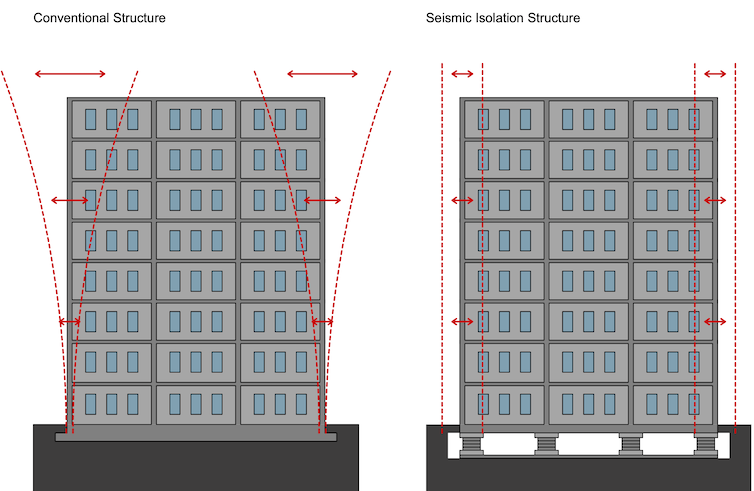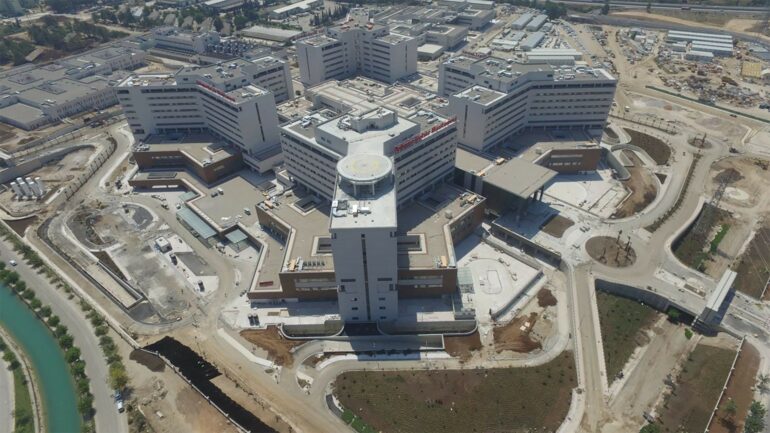The Feb. 6, 2023, earthquakes in Turkey and Syria damaged over 100,000 buildings, caused more than 10,000 collapses and killed more than 50,000 people. These earthquakes also put to the test advanced building technologies that can minimize damage and keep buildings functioning after a quake.
Several hospitals built with one such technology – called a seismic isolation system – survived the earthquakes with almost no harm, according to local news reports, even while surrounding buildings sustained heavy damage.
Adana City Hospital was built to record both ground shaking and the building’s response. Thanks to its seismic isolation system, the building saw a 75% reduction in shaking, according to the company that designed the isolation system, compared with neighboring structures. This system allowed the building to stay up and running after the earthquake.
Engineers aren’t surprised that the hospitals with seismic isolation systems survived with minimal damage, but through my work as a civil engineer, I’ve been hearing people in Turkey and abroad ask why more buildings don’t use these smarter engineering technologies.
A year after the 1999 İzmit earthquake in Turkey killed over 17,000 people, I moved to Istanbul for a bachelor’s in civil engineering. I moved to the U.S. for my graduate studies in 2005, and since then, I have been working on advanced technologies and materials that can ensure rapid recovery and reoccupation of buildings after a strong earthquake.
Although we’ve seen the effectiveness of seismic protection technologies during past major earthquakes, these technologies have been installed in only a tiny fraction of the places where they could potentially be useful.
Earthquake-resilient building technology
Engineers can control how structures respond to earthquakes in several ways.
Traditional approaches rely on having certain components of the building, like columns or beams, absorb the earthquake’s energy. However, this method can lead to damage accumulating in these structural features that may render the building uninhabitable.
Earthquake-resilient systems such as seismic isolation devices and seismic dampers minimize the seismic energy that goes into these columns or beams by either absorbing it or diverting it. As a result, the building experiences less motion and damage and is more likely to remain functional after an earthquake.
Seismic isolation systems prevent seismic energy from entering buildings in the first place by using devices made from rubber or steel plates coated with a friction-generating material that slide over one another to minimize an earthquake’s impact. These isolation devices are installed between the building’s foundation and the building itself. Alternatively, seismic dampers, installed in each story of a building, absorb earthquake energy the way shock absorbers work in a car and convert it into heat energy to minimize damage.

